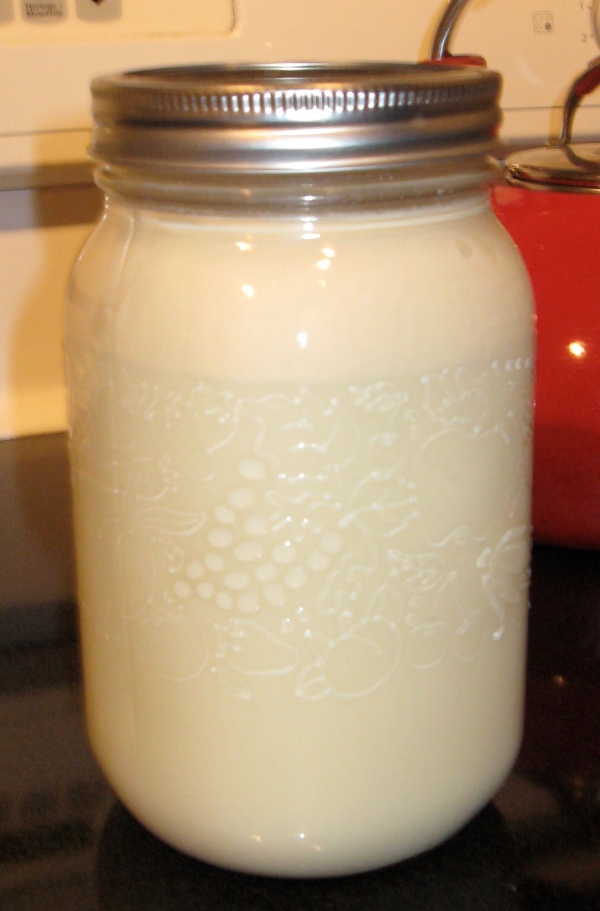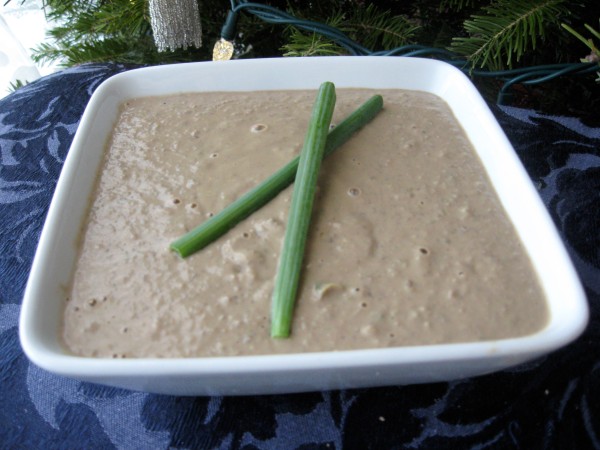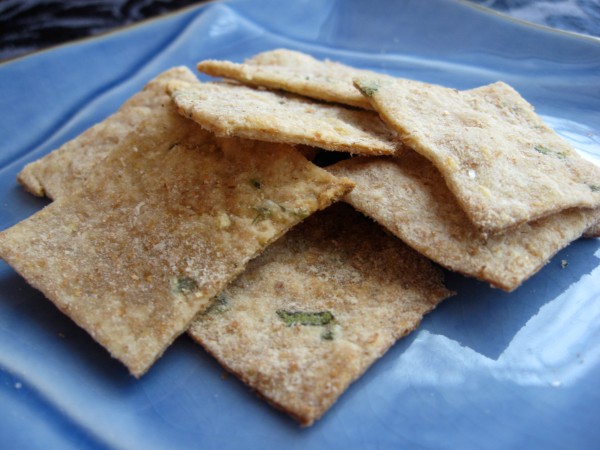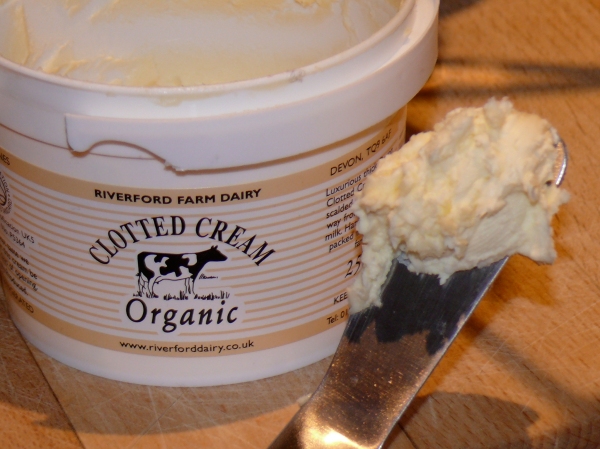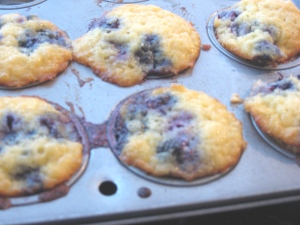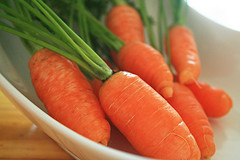Where to Begin?
Sometimes, life takes a few turns, and suddenly you log into your blog’s admin page, and find that you don’t even know your way around anymore. While my blog has been silent for a while, life has been loud, and large, and full of food-related discoveries and experiments – just not so full of time to write, sadly. I’ve followed a lot of blogs that have had a sustained hiatus – the burning passion for a particular topic can ebb and flow, but daily life takes over, and new discoveries become second nature. Would I ever eat unsoaked oatmeal? No (unless I was someone’s guest). Chicken from the grocery store? Nope. Canola oil? Never (here’s why). But weeks will pass before I consciously think about these things.
What keeps me occupied in the meantime?
- Food sourcing is a year-round affair in this household. Shortly after my last post, I got a group of people together to establish enough shares in a local farm’s veggie CSA so that we could have a local delivery spot (and by local, I mean walk to get the veg with girl-in-wagon – close). So, we paid for our full share in March, and have been getting so much veg each week we’re scratching our heads about how to eat it all, and spending evenings processing veg to preserve.
- 30 chickens in the freezer at this point + half a side of beef ready next week + side of pork (whole hog if we’re lucky) ready in the fall = had to borrow an extra freezer from my parents, and stretch the budget thin now so that meat won’t be part of the budget at all in months to come.
- Picking up a gallon of raw local wildflower honey this Sunday.
- A growing, changing, smart little girl called Naomi. She now has over 60 words at last count (some more obvious than others), and largely chooses running over walking. Drinks about a litre of raw milk every day, and eats 2 pastured eggs cooked in lots of high quality butter every morning, with gusto. Takes her fermented cod liver oil straight after a lump of coconut oil to coat the mouth and throat a little. Likes her veg so long as they are prepared with butter and garlic (yes, a connoisseur, I know).
- A job. Did I really leave that to last on the list? Yes, I am a working mama, and there is a SuperDad who stays home with the girl. If you add my almost full time job to my part time job and my studying for my licensing examinations, you end up with slightly more than a full time job in hours, but lots of flexibility and enjoyment.
So things are busy, and different than they were back in March, but change is good, and necessary.
Blog Plans
- Some fermented projects coming ‘atcha post-blog-silence. I mentioned the fermentation hadn’t stopped, right? So watch out for some updates. Goal: a fermented condiment with EVERY MEAL of the day.
- Some guest posts/recipes from the SuperDad. Did I mention that he is a chef at heart? Me, not so much. Let’s talk all night about food, and spend hours sourcing it and philosophizing, but seriously, can someone else do the lion’s share of the actual cooking?? I jest a little, but it’s true. I like to cook, and enjoy the satisfaction of making sure my family is well fed, but a passionate, creative force in the kitchen I am not. He is. The man will spend an hour researching a marinade for his 1 year old daughter’s lunch salmon. And he still gets the laundry done :) Don’t send any virtual slaps my way – I know I have a good thing going :)
- A kitchen tour post. Wanna see what’s in my pantry? Freezer(s)? Fridge? No? Oh, ok. Nevermind :)
- A few new book reviews. Heard of epigenetics? Get over to Underground Wellness and read up soon. I did, and I read some more on the subject, and colour me fascinated. I may not have had much time to write recently, but I always have time to read.
- Remember when I said we hope to some day live on some land so we can grow some food? Yeah. That dream got a bit bigger. I plan to share the details in a dedicated post soon.
- I also have some other projects percolating that I will share in due time.
In the meantime, thanks for coming back! I’ve missed you.
Shannon
Once Upon the Kitchen Counter Goes Local!
When I started this blog, owing to my general dis-ease with electronic over-sharing (I am one of the only people I know who does not, and has never had, a facebook account), I decidedly kept personally identifying information to a minimum. Thus, I’ve never actually declared where it is that I live. Today, however, I share with you my city of residence. I’ve decided that part of my blog’s purpose in the future will be to offer an index of resources and sources for local readers. This is because it can take years to figure out where to source good food and good farms, and I would like to share my homework in that department in the hopes that others may then have less homework to do, and more time to spend on other things.
Drum-roll, please….I am a proud resident of my nation’s capital – Ottawa. Ottawa boasts so many lovely things to see and do, but to me, one of the greatest beauties of Ottawa is its amazing proximity to an array of fantastic farms. I live in an urban condo, but within minutes, I can obtain fresh milk, eggs, meats and produce from local farmers. Don’t hate me! :)
So, if you’re from around these parts, stay tuned for a new “resources” page I am currently working on. If not, never fear. My regular posts will continue once that page is up and running in the near future, and in the meantime too. It will take some work to get things set up.
To whet the appetite of my local readers, I offer you a link one of my very favourite farms. I hear they may still have a few sides of Pork left to be had this Spring – so get yours ordered soon. A side of pork will take up about as much space in your freezer as 2 coleman coolers. If you don’t have that much space, split a side with a friend or family member! This is heritage breed, certified organic, pastured pork – the best of the best – and it is TASTY. When I posted a while back about a honey-garlic brined pork roast (here), which was completely amazing, it was from this farm. You can also order many other things from them, so be sure to browse the site, place an order, and support a wonderful family-run local farm.
In the next week or so, I will share my family’s cutting instructions for the side of pork we’ve ordered (yes, when you order a side of pork, you choose how it is cut according to your own tastes and preferences!).
Disclosure: I have no financial affiliation with Funny Duck Farms , and receive no compensation for recommending their products. I am just a very satisfied customer, letting you in on a very excellent food source :)
Monday Mouthful: Free-Range Egg Crackdown
Free-range egg ban shuts bed and breakfast – Prince Edward Island – CBC News.
Stories like these make me see green. A mom-and-pop B&B in Prince Edward Island decided to shut down business this week, in the face of a Health Department order to stop using the eggs from their 75 pastured laying hens. The government wants them to buy the eggs they serve at their B&B from the supermarket instead. Because those eggs are safer. And, this is all in the name of “prevention” – no one has ever been sick from the eggs at this B&B.
What a joke. Eggs from the grocery store are the real risk!! The government spokesperson who handled media questions on this issue explained that the problem is unsanitary conditions in unregulated facilities. There is joke #2. The government thinks it’s more likely that contaminated eggs will come from a family farm, where healthy hens roam on pasture, and the farmers consume and take responsibility for the product and the handling process themselves, than grocery store eggs from hens that have never seen the light of day, eat GMO feed, and get pumped up on medications and hormones to increase their egg production (but have little numbered stamps on the shells, assuring the consumer that the egg comes from an inspected facility). Too bad a stamp can’t create quality where there was none in the first place!
Get out of the kitchen, and leave small farmers alone, “Health” Department!! What a waste of tax money, and a slap in the face to real, homegrown food producers.
Do you know what the “riskiest” food is, according to outbreak data, as tracked by the United States FDA? Leafy greens. I personally avoid all non-organically grown greens for this reason, as well as the pesticide factor. I think it’s risky to trust mass producers of anything. So, while I completely agree that there should be government inspection of food production (heaven forbid industry self-regulation!), including mass-produced eggs that are sold in grocery stores, I think it’s ludicrous to target small family farms as risky and shut them down in the name of prevention.
There is a Monday Mouthful for you. That’s the name I’ve come up with for a new series of rants I will be posting on food-related topics.
Coming soon (you know, when life slows down just a tad): my neglected Urban Fermentation Project will be up and running again, and I will be unveiling a new project too. Stay tuned :)
This post is submitted to Monday Mania, Real Food Wednesday and Fight Back Friday!
The 2011 “Budgie”
I affectionately refer to my budget spreadsheet as “the budgie.” I check in with it every once in a while, play with the numbers, and make sure we’re on track. I’d be lying if I said it’s no fun. I’m all kinds of geeky. Over the Christmas holidays, we sat down and took a good look at the budgie together. I’ve been keeping a detailed spreadsheet since we got married three years ago, and I find it requires tweaking fairly regularly, since our circumstances tend to change a lot, from me being a student, to working in the summers, to paying tuition (and then not), to having a baby, job changes, buying a house…our “routine” (if we’ve ever really had one) has changed frequently over the years, and so has our budget.
We decided on a few changes over Christmas, made some decisions about priorities (we do have a third person to consider now!), and re-calculated things. We also noticed that we could be doing a lot better in some areas. Food is one such area.
We’re in the midst making 2011 a year of heightened frugality in the kitchen for a few reasons:
- I know a lot more about traditional food preparation than I did a few years ago, and for me, having more confidence means I create less waste, and have more room for creativity in the kitchen – in other words, I’m more than ready to move from the frontier stage to the implementation stage – to focusing less on sourcing and research, and more on stewardship of resources, if that makes sense;
- With a new little person in our family, we have a new reason to save our funds, and food is always our biggest monthly variable expenditure (with the most potential room for savings);
- Saving where possible means that we can invest more in the things that are more expensive, like quality meats and fats; and
- I have a few ideas for making 2011 our healthiest year yet.
So far, we’re doing well. But it doesn’t stop there. We’re also making 2011 a year light in grains. Here are some notes about the things we’re doing to support that change:
- Organ meats and fermented foods, two pillars of a healing grain-free diet, are VERY inexpensive. I am able to get grass-fed beef liver for $2/pound. This in a land where a pound of organic butter runs me $9-10. I’m well on my way to establishing a large repertoire of fermented staples, and my journey into weekly offal-dom (?) is impending.
- Bone broth is nearly free, and we’re in the throes of making at least 1-2 batches every week. We are using it so much we don’t even need to freeze it. It’s hardly any work to set up a proper batch of stock, and worth gold in terms of nutrition. This is the truly nourishing, set-it-and-forget-it-for-two-days variety of stock, just to be clear. I think four hour stock is much more labour intensive, and it certainly can’t hold a candle to true bone broth, nutritionally speaking.
- Eggs are a wonderful, relatively inexpensive source of animal protein, and we love them. How about an omelet night every week at the end of the week to use up the last of the veg, and stretch the protein budget? My fresh from the farm eggs are $5/doz, which means a 2 person 3-egg-each meal is only $2.50.
- Frozen wild-caught fish has replaced fresh for the time being, at a fraction of the price, without too much of a taste sacrifice. Leftovers are salad fodder for lunches the next day. Less expensive fresh seafood will be making a larger appearance over time too. Goodbye, fresh wild pacific salmon at $15/pound. Hello, fresh mussels at $2/lb.
- Meatballs. (If you’ve noticed the theme of this list is meat, you’re on to something. Aside from good fats, quality meats cost more pound-for-pound, but in terms of what you get (and what you don’t) when you go for quality, it’s hard to say they are really more expensive.) At the same time, more dollars to spend on meat means more dollars potentially saved if I can be creative enough. Anyhow, meatballs are inexpensive, relatively speaking, and can be stretched pretty far too.
All in all, my first quarter budgie report is quite positive. We’re eating better on less, so far. And it can only get better: I have a half-side of grass-fed beef, a side of (certified organic heritage breed) pork, and 30-40 pastured chickens coming when the weather gets nicer. These bulk purchases will help make the second half of 2011 and the beginning of 2012 even more frugal.
Is your budget spreadsheet set up to tell you what your per-day or per-meal budget is? Tell me it’s not just me :)
What do you do to keep the food budget down while limiting grains, and emphasizing quality?? I am so interested to learn from others on this front…let the discussion begin!
Attention: Cream is Edible!
I was recently at a downtown health food store, which has a case of organic milk. There was a sign on the outside of the glass door that read:
HARMONY WHOLE MILK IS NOT HOMOGENIZED. THE SOLIDS AT THE TOP OF THE JAR ARE EDIBLE.
We are at the point in our culture’s separation from real food that people do not even know that cream rises to the top of real milk, and that, indeed, it is edible!! What a sorry state of affairs! It used to be that people would judge the quality of milk by the depth of the cream line. The more cream, the better the milk. Now, even “whole” milk is usually homogenized, which results in the consumer being unable to determine the quality of the milk (among other things – scary things happen to the molecules in the milk when it is subjected to pressures up to 14,500 psi – 1000 times atmospheric pressure). Before just a few years ago, I didn’t know anything about cream lines and milk quality, but at this point, it’s hard to remember being so oblivious.
When I get my milk, here’s what it looks like:
Can you see that cream line? There is usually even more cream, but at this time of year (the depths of winter), the milk is not as plentiful, and there isn’t as much cream in it. I also know now from talking with my farmer that eggs are less plentiful when the days are shorter in the winter. I think we often just assume that foods are made the same way year-round, even when they are made by nature and not in a factory, and we sometimes forget that everything that lives has a natural cycle of life.
I like knowing where my food comes from (especially the animal foods). I grow more and more wary of supermarket eggs, meat and milk as time passes. I know exactly where my milk, pork, beef, chicken and eggs come from. I can conjure the exact fields in my mind where my food grows because I have visited them many times. My farmers know my daughter’s name and ask after her when we speak. I feel extremely privileged on this account. (But, I assure you, I am not rich. My family lives on one modest income.) In fact, on that note, I must take a moment to say that it is a privilege to have access to a wealth of information and choices when it comes to food. This can be easy to lose sight of. I try to always be grateful for my food even if it’s not the ideal, perfect, most nourishing thing I can imagine!
What should that sign have read? I’m thinking something like: ATTENTION CUSTOMERS: CREAM MAY CAUSE HEIGHTENED IMMUNITY TO DISEASE. WE EXPECT MORE CREAM WHEN THE WEATHER IS NICER. PLEASE BE PATIENT.
(For an excellent post on the immunity benefits of butterfat, head over to Sarah’s post here.)
This post is submitted to Fight Back Friday and Monday Mania!
Country Chicken Liver Pâté…
…and a few thoughts on liver and organ meats:
Modern nutritionists often shun organ meats since they contain cholesterol, or in the case of liver, because toxicities can accumulate in the livers of all animals since the liver’s function is to clean the blood. Start with this site to read about the health benefits of cholesterol and why this maligned substance is essential for brain function and disease prevention. There, the author argues in his research that the culprit in cases blamed on cholesterol is actually oxidized polyunsaturated fatty acids (found in radically-processed vegetable oils which mainstream nutritionism claims are healthier than naturally occurring, unprocessed animal fats).
As for toxicities in liver, proper sourcing is key. Buy only organic, or even better, grass-fed livers. Then, even if there are some residual toxicities in the liver, the nutritional benefits (which are astounding) will vastly outweigh them.
Why eat liver? Liver is or has:
- An excellent source of high-quality protein
- Nature’s most concentrated source of vitamin A
- All the B vitamins in abundance, particularly vitamin B12
- One of our best sources of folic acid
- A highly usable form of iron
- Trace elements such as copper, zinc and chromium; liver is our best source of copper
- An unidentified anti-fatigue factor
- CoQ10, a nutrient that is especially important for cardio-vascular function
- A good source of purines, nitrogen-containing compounds that serve as precursors for DNA and RNA.
- Source: The Liver Files
A little more from the liver files on the intriguing “anti-fatigue” factor in liver, which makes it an excellent choice for body-builders and athletes: In one study, three groups of rats were fed three different diets:
- A basic diet
- A basic diet with added B vitamins
- A basic diet with added liver
The rats were then placed in a tub of water they could not escape from. The times they swam before giving up (on average) were (respectively):
- 13.3 minutes
- 13.4 minutes
- One swam 63 minutes, one 83 minutes, one 87 minutes, and the rest were still swimming at the 2 hour mark, when the test was over.
Fascinating!! There are certainly many reasons why liver (and other organ meats) have been prized by traditional cultures for health, strength and vitality. If you’re worried about “too much vitamin A,” the same article linked to above also discusses this issue. The bottom line is:
- don’t take too much synthetic vitamin A; and
- you can safely consume two 4 ounce servings of liver every week to obtain its myriad health benefits without even approaching dangerous thresholds (and that’s lots of liver!!).
One last aspect of liver (and vitamin A) that I find fascinating is the impact of this extremely important nutrient on palate development in babies and children. A mother’s diet needs sufficient vitamin A for her baby’s palate to develop that beautiful dental arch and facial structure with high cheekbones seen in the people studied by Weston Price (check out one picture from this work over in my Food Philosophy post). Sufficient vitamin A also ensures excellent vision.
Without enough vitamin A, the palate is narrow, the teeth are crowded, and there are problems with the bite, which can affect a whole host of issues including breathing, IQ, and sleep. It amazes me that despite this existing research, some people still think that a mother’s diet or nutrient stores have little bearing on the development of her growing baby. And because of problems with vitamin toxicity from synthetic Vitamin A, pregnant women are warned not to eat liver, an extremely important source of nourishment for optimal fetal development in the first trimester. How sad!
Anyhow, this is certainly not everything there is to know about liver, or vitamin A. It’s just a few thoughts that have been percolating in my mind, and some sources I’ve been finding particularly interesting. If you have a favourite tidbit or source to share regarding liver or vitamin A, please comment with a link or your thoughts!!
In keeping with my goal of adding liver into our weekly fare, I decided to make some chicken liver pâté recently. It turned out brilliantly!! We really enjoyed it. The wine and mushrooms really make for a lovely flavour and texture. I followed the recipe in the Good Housekeeping Illustrated Cookbook (Coulson, 1980), which didn’t require any modifications in order to align with our dietary principles. If you have the cookbook, the recipe is on page 122, but I will walk you through it here. Chicken liver pâté is an excellent way to enjoy the benefits of liver without the ‘offal’ taste :) I am still working on getting a perfect recipe ironed out for beef liver, which has a much stronger taste.
Country Chicken Liver Pâté
Ingredients:
- 3/4 cup unsalted butter
- 1 pound chicken livers
- 1/3 cup minced green onion
- 1/2 pound mushrooms
- 1 medium garlic clove, minced
- 1/2 cup dry white wine
- 1/8 tsp. hot pepper sauce
- 1 tsp. unrefined sea salt
Method:
- In a skillet over medium-high heat, cook chicken livers in 1/4 cup of the butter with the green onions, mushrooms and garlic:
- Stir in the wine and hot sauce, and simmer the mixture for about 5 minutes.
- Cook until the livers are tender but still pink on the inside.
- Blend the mixture in a covered blender at low speed, stopping occasionally to scrape the sides. You can make the mixture as chunky or smooth as you prefer.
- Melt the rest of the butter, add to the liver mixture with the salt, blend well, and refrigerate, covered.
- This recipe makes 3 cups of pâté.
- Enjoy!!
Any great links on liver to share? I’m always looking for new ways to prepare liver…and I find it fascinating to read about too.
This post is submitted to Real Food Wednesday and Fight Back Friday!!
Ch-ch-changes…
It’s funny. It often happens that as soon as I think I have something figured out, I learn something new, or am inspired in another direction, and I go back to the drawing board. I’ve gone vegan.
JUST KIDDING!!!!!!! That will happen right after I win my second Oscar. After discovering the work of Weston A. Price, nothing could ever convince me that humans are not meant to eat animal foods in abundance (though proper sourcing, which includes humane treatment of the animals, is of utmost importance).
I’m talking about my thoughts on grains, and my priorities for my real food journey. I posted a long while back (here) and again more recently (here) about gearing up to start sprouting, dehydrating and grinding my own grain for things like fresh homemade bread and healthy cold breakfast cereal (because you simply cannot buy healthy cold breakfast cereal in the store – do you know what an extruded grain is?? If you don’t, read this before you pour your next bowl of cereal or eat another “rice cake”).
But – I have been reading a lot about grains recently, including re-reading sources I read long ago but have recently re-discovered. What I am reminded of is that grains are relatively new in the human diet, and that we were leaner, stronger, and healthier before the agricultural revolution occurred. I once spent many months without grains or sugar, and during that time, I felt energetic, I slept well, and I was lean. Since I know that this is what works for me, I need to focus my efforts on getting back to that place, as opposed to spending hours creating healthier versions of things that just aren’t as nutrient dense as other choices are. Plain and simple.
One major thing I have drifted away from recently (while I finished a degree, moved and had a baby) is eating “dinner for breakfast”. There is no reason why “breakfast foods” need to be sweet. It’s a habit, not a requirement. Dinner for breakfast involves re-inventing the morning palate. Real food is real food any time of day. When we were in Thailand a few years back, I remember that in one place we stayed, the Thai breakfast option was a bowl of fish soup with garlic and onions, while the Western option involved pastries with icing. I found that a bit embarrassing at the time!
When I was newly pregnant with our daughter and working crazy hours, my husband made me greens with my eggs every morning (both cooked in lots of butter) for the folic acid in particular, but also for the reason that vegetables are delicious at breakfast too, so long as you involve enough butter, and use unrefined sea salt to taste. Oh, and for the reason that he’s just an amazing guy all round :)
This calls for a re-statement of my real food journey goals. I will no longer be focusing on creating “healthier” versions of unhealthy things (though I am sure I will still do this sometimes). Instead, my new focus will be on creating things that are healthy in themselves, and breaking the vicious cycle of grain and sugar (even natural forms) dependence. I’ve done it before, so I know I can do it again. I can hardly wait to enjoy the tartness of plain yogurt without any maple syrup again. Or to eat a small, simple meal and feel satisfied at the end. These pleasures are missing in a grain-based diet, when the body craves more and more, and the palate’s threshold for sweet tastes only ever climbs. I’m sure I eat fewer grains and sugar than some people, but I have miles to go before I can claim a diet that resembles the pre-agricultural human diet.
My new manifesto with all of this in mind is something I will be pinning up on the kitchen wall:
Failing to Plan = Planning to Fail
Because without a menu plan in hand, a solid food procurement list (‘shopping’ implies making choices at the store, I am talking about intentional, planned food sourcing here), and a ready supply of nourishing snacks, the plan is to fail.
Coming up: my favourite homemade liver pâté recipe, and the next installments in my Urban Fermentation Project….stay tuned….I’m totally rejuvenated after my amazing holiday in England, and excited to get back to the kitchen and make things happen!
Anyone want to join me for some rejuvenated planning efforts this month? Have any tips for planning in general or for saying goodbye to grains and sugar in particular?
This post is submitted to Real Food Wednesday and Monday Mania!!
Like what you read? Subscribe to my feed or enter your email address in the top right corner so you never miss a post!
Clotted Cream
My family is currently in England on a holiday. We’re staying in lovely Ascot, where my parents live, and I’ve been finding every excuse imaginable to eat clotted cream.
If you’ve never had it, it’s commonly served here with ‘cream tea’ (with scones or other pastries, often accompanied by jam). It’s made by indirectly heating raw cream using steam, and then letting it cool slowly so that the cream forms ‘clots.’ The texture is in between butter and whipped cream. It’s a fluffy bit of heaven, and I can’t believe I’ve never had it before this week!
Wikipedia notes the following about clotted cream, which has a butter fat content of 55-64% (here):
“When compared to the fat levels of other creams, for example single cream at 18%, clotted cream is often regarded as unhealthy today. According to the Food Standards Agency, a full 100 grams (3.5 oz) tub provides 586 kilocalories (2,450 kJ) (roughly equivalent to a 200 grams (7.1 oz) cheeseburger).”
High in calories? Of course! Unhealthy? Absolutely not! This excerpt suggests that something is unhealthy if it is high in calories. Not so. Good fats (like bad fats) are high in calories, but good fats are also incredibly nutrient dense. Traditional peoples in many regions of the world considered butter fat a sacred food. In fact, butter is life-giving and disease-fighting, not the evil indulgence often portrayed by the media. If you are skeptical of this, I don’t blame you. But consider this: butter has been around for millennia, while cancer and heart disease are quite new. If you want to read more about the benefits of butter, (and why you should never let margarine pass your lips again), I recommend starting here (you can read the studies this article is based on by requesting them at your local library). I consume butter (of good quality) with abandon, knowing that it is a wonderful source of true nourishment. Put enough butter on your vegetables at dinner, and notice how you don’t feel as much like snacking later in the evening!
Look for organic butter, ideally from grass-fed cows. Where I live, a pound of organic butter is around $9-10, which is about double the price of non-organic. Even in my tight food budget, I do not compromise on butter quality. I try to save it for eating on things as opposed to cooking, so I can enjoy it the most. (I cook with expeller-pressed coconut oil instead of vegetable oil [expeller-pressed coconut oil has NO COCONUT TASTE – in fact, like vegetable oil, it has no taste at all, yet is as good for you as vegetable oils are bad for you]. I save olive oil for raw use such as in salad dressings, since it’s not meant to be heated up.)
While it certainly contains a great deal of calories, and isn’t quite as raw as my beloved jersey milk back home, clotted cream is indeed a health food. The pastry and jam sandwiching it, however, are another story. Now I just need to come up with a grain-free sugar-free scone to act as a healthier vehicle for the clotted cream…
I’ll be back to regular posting in February. On the food-related to-do list while here in England:
- eat lots of pâté (found in abundance at the local grocer),
- experiment with goose fat for roasting vegetables (also procured from the local grocer), and
- visit the kitchens of Henry VIII at Hampton Court Palace…
Updates to follow…
This post is submitted to Real Food Wednesday, Fight Back Friday, and Monday Mania!
Coconut Flour Blueberry Muffins
Last night, I craved a breadish treat – something with a little sweetness to enjoy with my tea and book. But I’m avoiding grains and sugar, which ruled out many possibilities. I found myself poking around online for a grain-free sugar-free experiment – would it be a bar, a cookie, or a cake? Turns out, it was a muffin that caught my eye.
I found a recipe for basic coconut flour muffins online (here), and added a handful of fresh blueberries to my batch for a twist. I made them as mini-muffins, and promptly ate three, with heaps of butter while they were still warm out of the oven. Heavenly. Mission accomplished, and only 1/2 hour from craving to satisfaction, including research time.
These are grain-free, moist, and mildly sweet. The sweetener is honey, and the fat is butter, but you could experiment with other oils or sweeteners if you wanted (just don’t use vegetable oil!!). In my experience, coconut flour imparts a distinct coconut flavour, and coconut flour baked goods tend to have a lot of eggs and a certain… eggy-ness or sponge-like quality to their texture. These are no exception. But my taste buds are not complaining!
If you are looking for a fluffy, coffee shop muffin, don’t make these. But if you want a grain-free mini-treat that tricks your senses into feeling as though you’ve been devilish, forge ahead! The added bonus to these muffins is that you don’t eat one (or a few minis), and then think about the rest in the tin forever after until the last crumb is gone. It must be the absence of the drug-like effects of white flour and sugar. These actually satisfy in moderation!
I would like to try these again with nuts and cinnamon. Any other ideas for twists on this basic recipe? Other berries would be good, fresh or frozen. Maybe cranberry with a little lemon zest. Or, a mashed-up over-ripe banana could be used as part of the sweetener to make banana coconut flour muffins (pecan would be nice in there too!). Ah, the possibilities!
Organic coconut flour is available in bulk at the Bulk Barn in Ontario, for around $.80/100 grams, in case you’re in Ontario and wondering where you can get it. If you have no idea why coconut flour or oil is a healthy choice, I recommend Eat Fat Lose Fat by Sally Fallon and Mary Enig (see their site here). Now on to the recipe:
Ingredients:
3 eggs
2 Tb melted butter
2 Tb milk, coconut or whole (I used whole)
3 Tb honey (I used raw)
1/4 tsp salt (I omitted this as I used salted butter)
1/4 tsp vanilla
1/4 cup coconut flour, well sifted
1/4 tsp baking powder (aluminum free is best)
Method:
Whisk together the wet ingredients. If you use raw honey as I did, this will take elbow grease! Mix your dry ingredients together, add to the wet, and mix together until no lumps remain. If you make regular (wheat flour) muffins, you’ll have to forget the instinct to mix as little as possible and leave the batter a bit lumpy. For these, you want no lumps left in the batter, which will be the consistency of pancake or crepe batter as opposed to traditional thick muffin batter. Add in your fixings, fill your tin, and bake at 400F for about 10 minutes (for the mini-muffins). The recipe is for 6 regular muffins, or you can make 12 minis instead. Here they are ready to go in the oven:
And here they are mid-way through baking:
They’re done when the edges are a bit golden and the bubbling at the top starts to reside. Slather with room temperature butter, put your feet up, and enjoy with a nice hot cup of tea.
These would be a great breakfast-to-go. I can’t wait to try other possibilities with the basic batter!!
Coming soon: Urban Fermentation Project update and 2011 Kitchen Budget Ideas….stay tuned!!
This post is submitted to Real Food Wednesday. Thanks for stopping by, Real Foodies and Weightloss/Wellness Challenge participants!!
HighChair Times
One of the main purposes of this blog is to document my family’s real food journey. A big part of that journey is the way we are choosing to feed our daughter, who is now nine months old. This post is an update on what’s currently on her highchair (the tray, as well as every other surface!). You won’t be surprised to hear that nutrient density rules when it comes to our food choices for Naomi! (If you’re new to all of this, and responsible for feeding a baby, a good place to start is here.)
She has been eating a little raw grass-fed beef liver (frozen, and shredded into) a pastured egg yolk (and a pinch of unrefined sea salt) nearly every day since around 5-6 months of age. We continue the egg yolk prepared this way on a daily basis.
Now we’ve started in with the heavy-hitters. She is eating grass-fed beef that I broiled and pureed, and “baby pate” made out of pastured chicken livers and hearts and organic butter. She also gets pureed organic apple, pumpkin, pear, plum, carrot, beet, zucchini (green and yellow), sweet potato, butternut squash, and turnip.
Most recently we added pastured chicken puree, wild sole and salmon purees, and pastured lamb to the meat rotation. I pureed the meat with my homemade fish and chicken stocks for added minerals. I’ve also been brewing my own Viili yogurt, and I have given her a few tastes of plain yogurt so far. Soon I will be making a smoothie in the mornings for her and I with yogurt, banana and raw egg yolks (fresh from the farm). I may add more to the smoothie for myself after I’ve portioned out Naomi’s share.
We just add one new food every few days, and so far, nothing has been an issue for her. She eats banana, avocado and cantaloupe melon by herself when I put it on her highchair in a strip, and I let her hold her spoon, and have a few sips of water right out of a cup, so she can learn how to balance and hold one. Plus, she finds it really fun, and I want the highchair to be a fun experience for her! She handles the chunkier things like the beef, banana and avocado like a pro.
I made the meat-based baby formula from Nourishing Traditions (all my ingredients finally arrived!), and we are now planning to put her daily dose of fermented cod liver oil into a little of it each day and offer it to her sip-by-sip in a cup, or in a little bottle if we are crunched for time.
This has been a huge adjustment from exclusive breastfeeding, and has taken an enormous amount of planning and work to get everything set up so far! Eventually, Naomi will eat what we eat, but for now, I’m more comfortable with introducing things one at a time, and only after I’ve just given her a full feeding of milk. For the time being, all of these foods are supplemental to that.
I have been using ice cube trays to freeze small portions of each of these foods (except the raw things, of course). I just portion the food into trays, wrap the trays in wax paper, and leave them overnight in the freezer. The next day, I cut the wax paper into small squares and wrap each cube in a little so they don’t stick together, and then all the cubes go into one ziplock bag in the freezer. Then, each night, I dole out what she will be eating the next day into bowls in the fridge so everything is thawed by morning. Breakfast is usually a meat cube, a vegetable, a fruit and the egg yolk, lunch is 4-5 more cubes and something she can eat completely by herself (banana, avocado, melon or mango at this point), and dinner is another 5-6 cubes give or take. I let her hold her spoon and touch all the food with her hands so she can explore the textures, and learn how to hold the spoon herself. She absolutely loves sitting up in her highchair!
Anyone out there have any baby-feeding experiences to share? I know that everyone does things a bit differently, both in terms of the ‘what’ and the ‘when,’ so I’m only describing what’s worked for us so far. What has worked for you? What’s currently on (er…under?) the highchair chez you?

